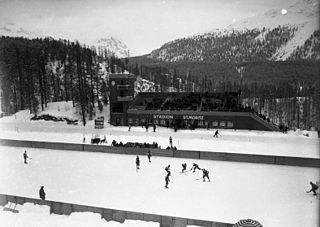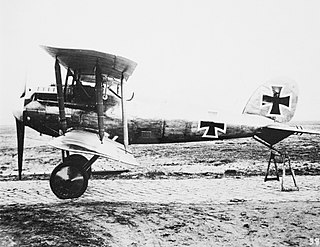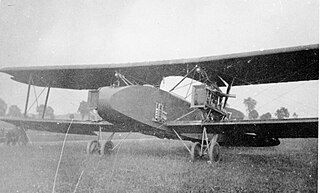
St. Moritz Olympic Ice Rink is an outdoor stadium in St. Moritz, Switzerland. It was the venue for the ice hockey, speedskating and figure skating events, as well as the location of the opening and closing ceremonies at the 1928 Winter Olympics and 1948 Winter Olympics.

The Albatros D.VII was a German prototype single-seat fighter biplane flown in August 1917. It was powered by a water-cooled Benz Bz.IIIb V8 engine developing 145 kW (195 hp) and armed with two 7.92 mm (.312 in) machine guns. The D.VII had ailerons on both upper and lower wings linked by hinged struts.

Switzerland competed at the 1960 Winter Olympics in Squaw Valley, United States.

Finland competed at the 1956 Winter Olympics in Cortina d'Ampezzo, Italy.

Belgium competed at the 2002 Winter Olympics in Salt Lake City, United States.

South Korea, as Republic of Korea, competed at the 1992 Winter Olympics in Albertville, France.

South Korea, as Republic of Korea, competed at the 1994 Winter Olympics in Lillehammer, Norway.

South Korea, as Republic of Korea, competed at the 1998 Winter Olympics in Nagano, Japan.

Israel competed in the Winter Olympic Games for the first time at the 1994 Winter Olympics in Lillehammer, Norway.

The Albatros G.III, was a German bomber aircraft development of World War I. It was a large, single-bay biplane of unequal span and unstaggered wings. Power was provided by two Benz Bz.IVa pusher engines installed in nacelles carried between the wings. An unusual feature of the design was that the lower wing was provided with cutouts for the propellers, allowing the engine nacelles to be mounted further forward than would have been otherwise possible. Few were built, these seeing service mostly on the Macedonian Front in 1917.

The Albatros J.II was a German single-engine, single-seat, biplane ground-attack aircraft of World War I.
The Alabatros W.5 was a floatplane torpedo bomber used by Germany during World War I. It was a biplane with twin pusher engines.

The Fokker V.2 and V.3 aircraft were developed from the Fokker V.1, but utilized an 89 kW (120 hp) Mercedes liquid-cooled inline engine instead of the rotary. This is similar to the Fokker V.6 being tested as the Fokker V.5 was being developed. Like the V.1, the fuselage was circular in cross section, and the wings were covered with plywood. To match the center of pressure and center of gravity with the heavier engines, these aircraft had their upper wing's outboard sections swept back.
The Organizing Committee of the XXII Olympic Winter Games and XI Paralympic Winter Games of 2014 in Sochi is the organization responsible for the 2014 Winter Olympics and 2014 Winter Paralympics in Sochi, Russia. It was established on 2 October 2007 by the Russian Olympic Committee, the Federal Agency for Physical Culture and Sports, and the Administration of the City of Sochi.
The Curtiss XP-18 was ordered in 1930 and was to have been a single-seat biplane powered by a Wright IV-1560 engine. The design was cancelled before Curtiss constructed any.
The Curtiss XP-19 was ordered in 1930 and was to have been a single-seat, low-wing monoplane powered by a Wright IV-1560 engine. The design was cancelled before any were built.

The Fieseler Fi 168 was a projected German ground attack aircraft designed in 1938 by Frederik Kassel, who created the aircraft after a request from the Technisches Amt of the RLM Reichsluftfahrtministerium -.
The Albatros L 74 was a two-seated German training biplane, produced by Albatros Flugzeugwerke. Only two were produced.
The Messerschmitt Bf 165 was a German long-range bomber project. There is very little info published about the Bf 165, but it is known that wind tunnel testing of the aircraft began in 1937. A full-scale mockup of the aircraft was constructed for display to the Reichsführer in 1937. The Bf 165 was to have a top speed of 600 km/h and a range of 6000 km with a 1000 kg bombload.
The Albatros L.70 was a single-engine two-seater reconnaissance biplane. It was developed by Albatros Flugzeugwerke in the early 1920s. It was powered by a Napier Lion engine. The only one was built in 1924/1925.











